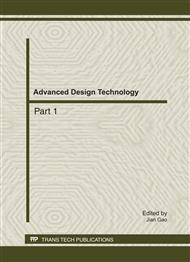p.58
p.62
p.67
p.72
p.77
p.83
p.88
p.92
p.96
Knowledge Acquisition from Simulation Data to Product Configuration Rules
Abstract:
Product configuration design and simulation analysis are of critical importance in the rapid response to performance-driven product design. Product configuration design is the transition from customer specifications into physical solutions, while simulation analysis compared with testing result explains that physical solutions are correct and applicable to engineering. Configuration rules play an important role in the product configuration design. Finite element analysis (FEA) has been used widely in the simulation analysis. We could regard the simulation data of FEA as the important knowledge source of configuration rules. Then, a methodology of integration between product configuration design and simulation analysis is proposed to realize the dynamic update of configuration rules. An application of a clamping unit of injection molding machine that illustrates the proposed approach is developed at the end of the paper.
Info:
Periodical:
Pages:
77-82
Citation:
Online since:
August 2011
Authors:
Price:
Сopyright:
© 2011 Trans Tech Publications Ltd. All Rights Reserved
Share:
Citation:


